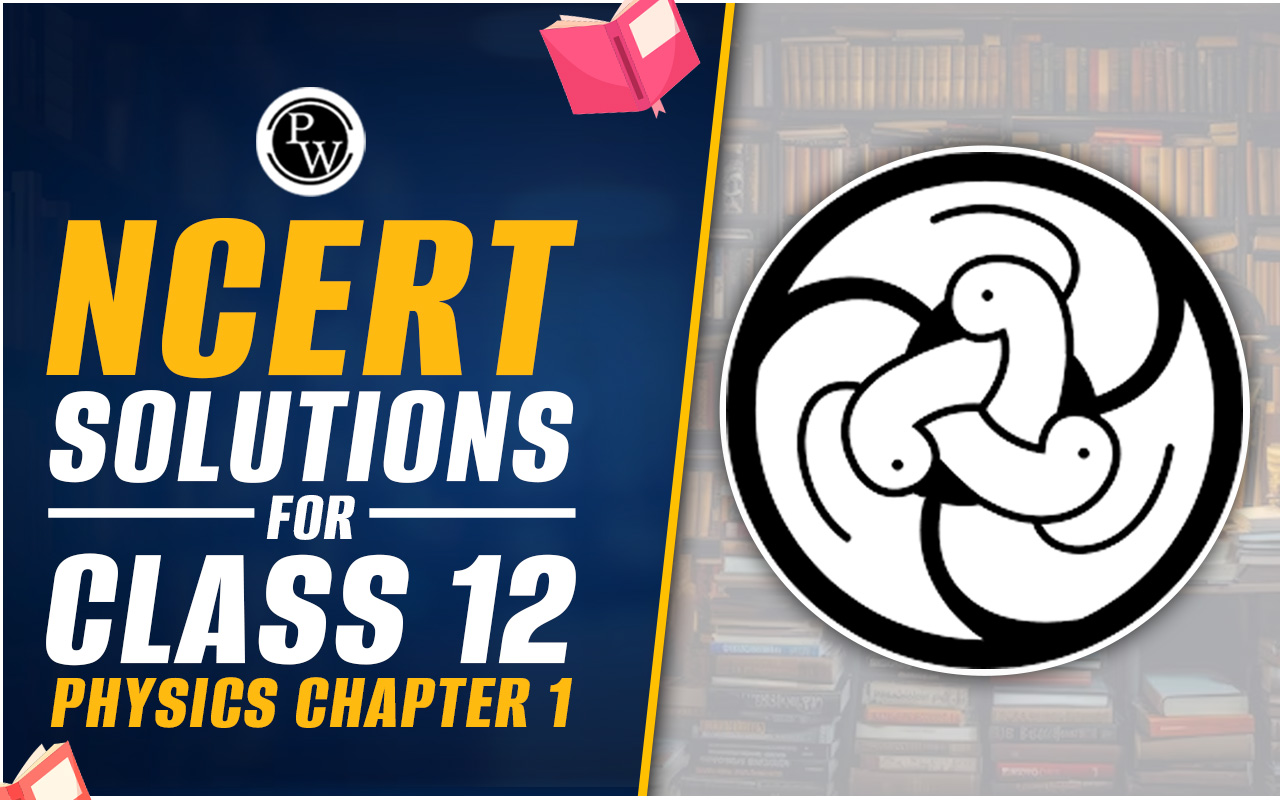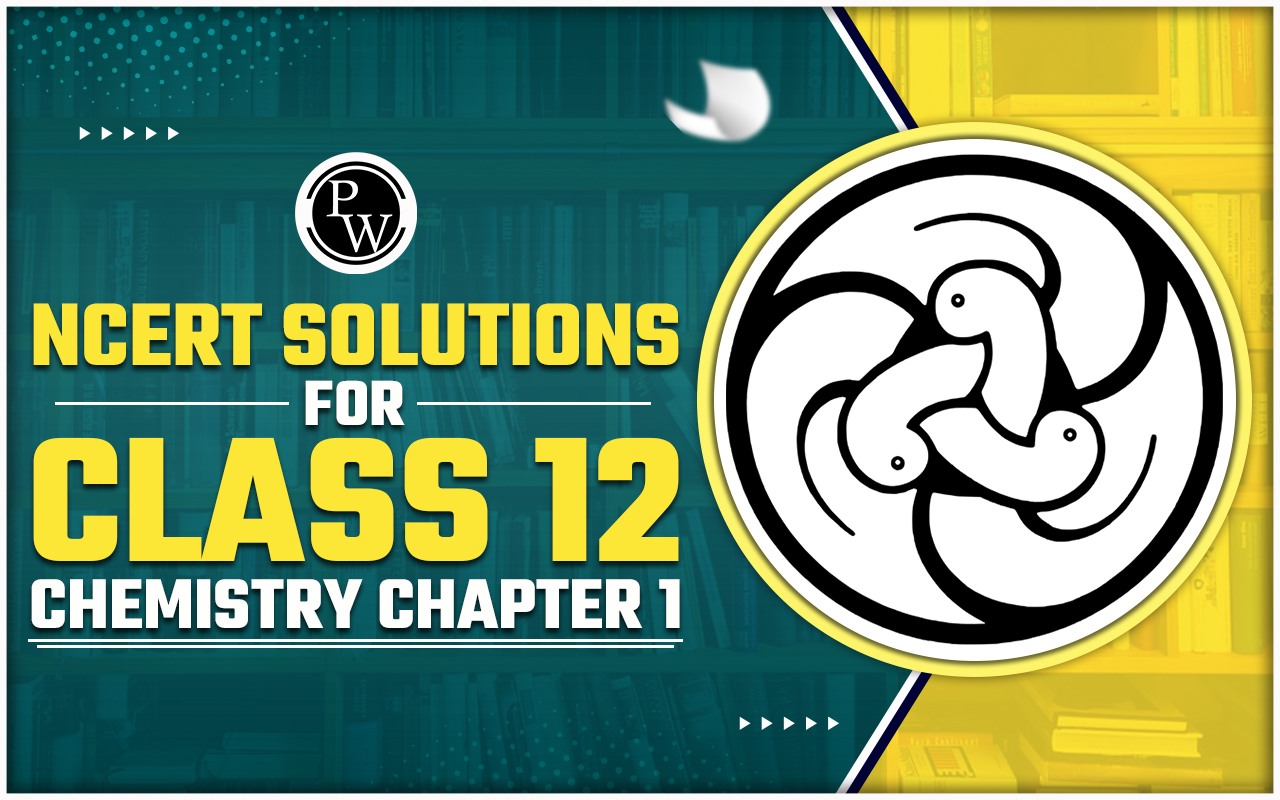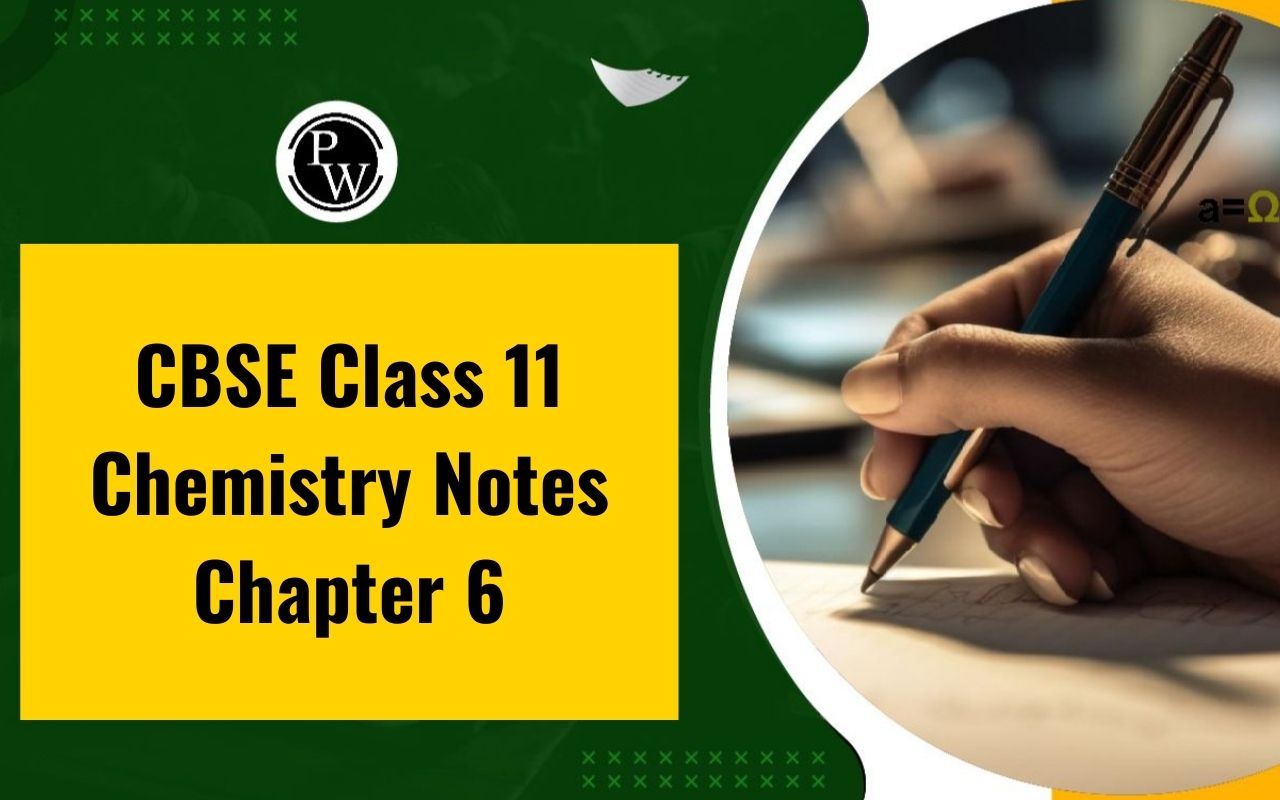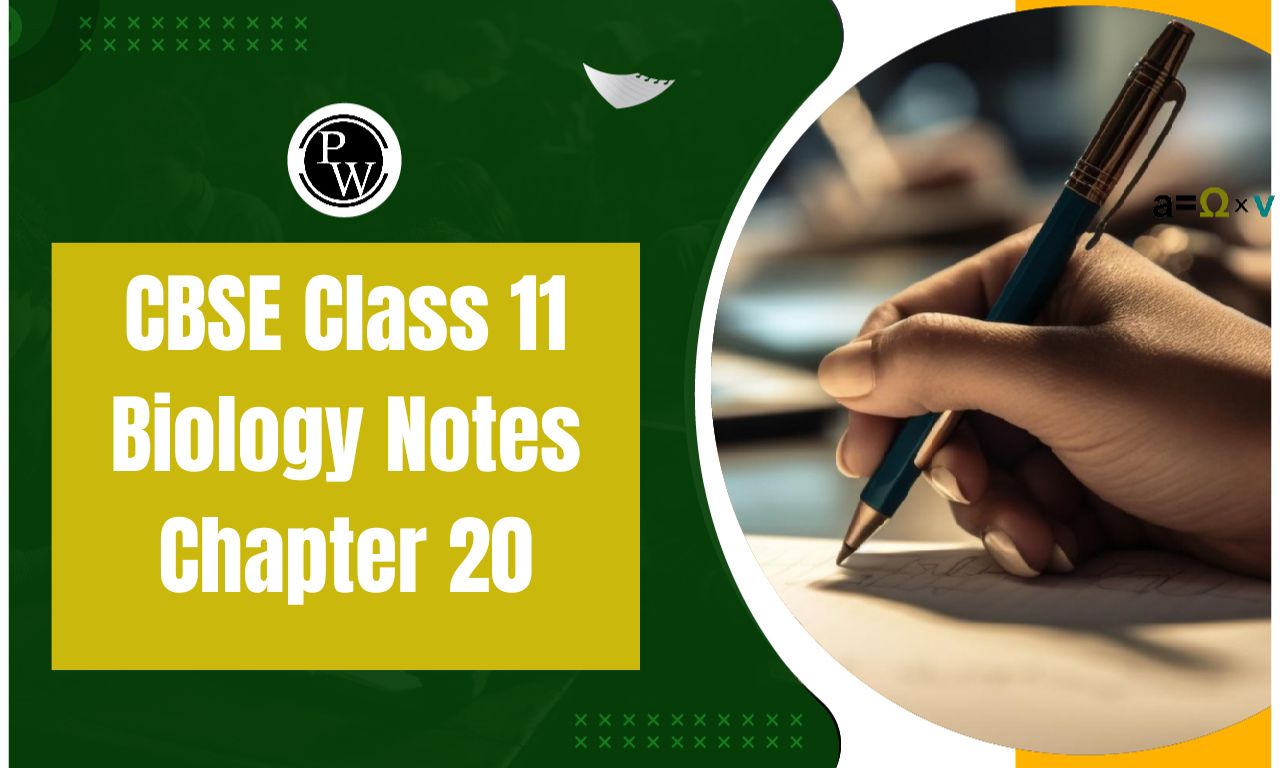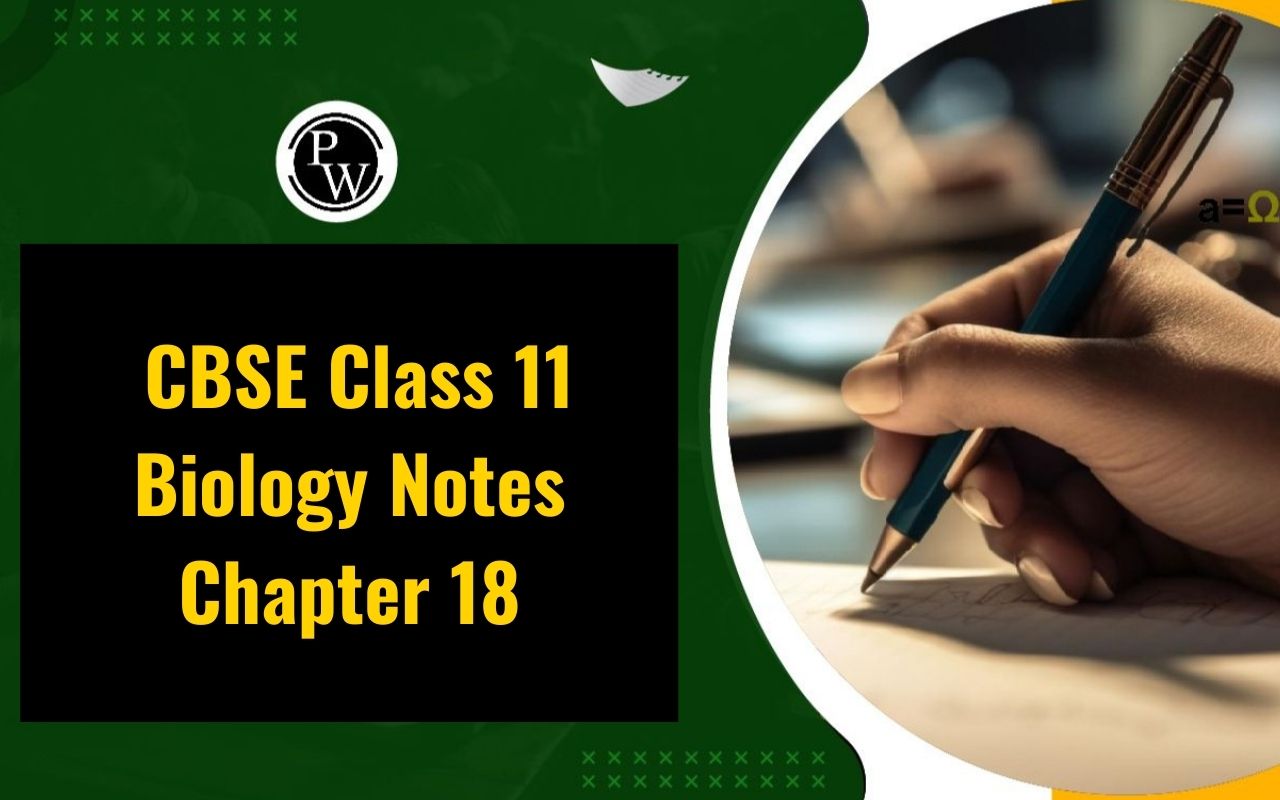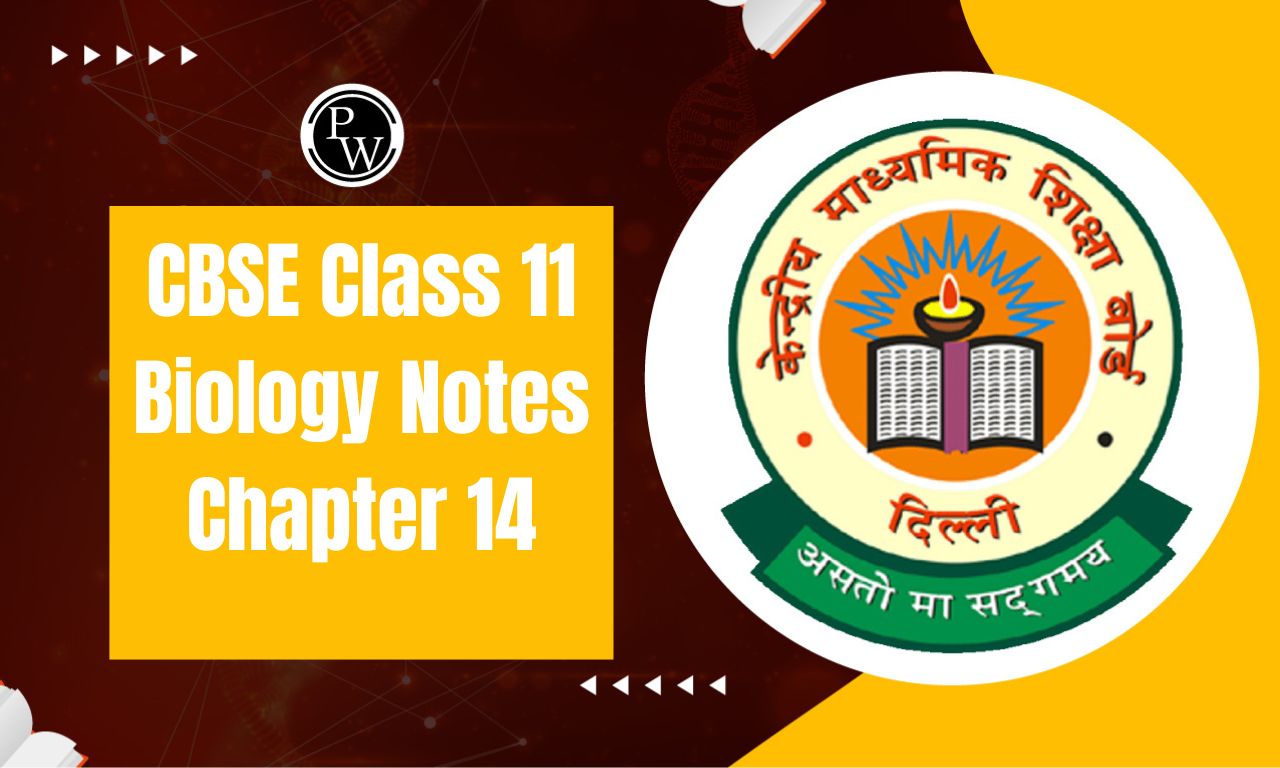
CBSE Class 11 Biology Notes Chapter 3: The CBSE Class 11 Biology Notes Chapter 3, "Plant Kingdom," includes all of the possible NCERT-based texts from this chapter that may be found on the CBSE Class 11 Biology syllabus.
After fully comprehending the chapter, students can practice these notes as well as the crucial diagrams. It is advised that students download the free PDF and review the significant subjects addressed in this chapter.CBSE Biology Class 11 Chapter 3 Notes
The Plant Kingdom chapter in CBSE Biology Class 11 Chapter 3 Notes colorfully covers all aspects of botany. Pay close attention to the notes created by subject matter experts to thoroughly prepare this chapter. The ideas and principles of botany will all become more comprehensible.CBSE Class 11 Biology Notes Chapter 3
Based on the complexity of the body (unicellular and multicellular), the complexity of the cell structure (prokaryotic and eukaryotic), and the mechanism of nourishment (autotrophs and heterotrophs), Whittaker divided all living things into five kingdoms.Classification of the Plant Kingdom
Three categories can be applied to all classification schemes, ranging from Aristotle's to the twentieth century:1. Artificial System: A small number of morphological features serve as the basis for classification in this system.
Theophrastus, Pliny, and Linnaeus employed a fictitious classification scheme.2. Natural System: All significant connected characters serve as the basis for categorization in this system. both outside and within. A natural system of classification was employed by Bentham, Hooker, Adanson, and Candolle.
3. Phylogenetic System: Plants are categorized according to their evolutionary relationships. It was Eichler, Blessy, Whittaker, Engler, and Prantl, Hutchinson who used phylogeny to classify.
Numerical Taxonomy: Computer-based taxonomy based on statistical techniques of equal weight.
Taxonomy based on cytology or the cellular structure (number of chromosomes, form, behavior, etc.) is called cytotaxonomy .Chemotaxonomy: Plant taxonomy based on chemical components (protein composition, DNA sequencing, flavor, aroma, etc.).
Plant kingdom classification based on flowering is known as the Eichler classification . separated into two groups: Phanerogamae (flowering, seed-bearing plants) and Cryptogamae (non-flowering, seedless plants).
The three groups of Cryptogamae are Thallophyta, Bryophyta, and Pteridophyta based on the plant body. Thallophyta: The undifferentiated plant body of the species resembles a thallus. Bryophyta: a class of plants with stem- and root-like structures without vascular tissues. Pteridophyta: The real roots, stems, and leaves are distinct parts of the plant body. So-called vascular cryptogams contain vascular tissues.Thallophytes Again Divided Into:
-
Algae (pigmented thallophytes)
-
Fungi (non-pigmented thallophytes)
-
Lichens: Symbiotic association between algae and fungi.
Phanerogamae is Divided Into Two:
-
Gymnosperms (naked seed plants) and
-
Angiosperma (covered seeded plants)
Angiosperms Are Again Divided Into Two:
-
Monocots (bearing single cotyledon, fibrous root system, and parallel venation)
-
Dicots (have two cotyledons, taproot system, and reticulate venation).
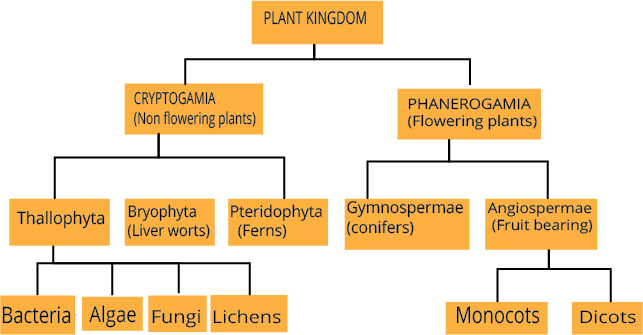
ALGAE
-
Phycology: Branch of Biology that deals with the study of algae
Phycos=seaweed
Logos=study
-
Fritch –Father of phycology.
-
M.O.P.Iyengar is the father of Indian phycology.
Algal members are pigmented thallophytes.
Habitat
Hydrophytes: Water is their habitat. In aquatic habitat-
-
Freshwater (Spirogyra) and marine (Sargassum).
-
Floating- Chlamydomonas, Spirogyra
-
Benthophytes - These plants remain attached to the bottom of their habitat. Example Chara (stoneworts)
-
Xerophytes: Their habitat is desert.
-
Mesophytes- They grow in medium habitats.
-
Epiphytes- They grow on plant bodies (Cladophora)
-
Epizoic-growing on the animal body (Trichophillus)
-
Lithophytes- They grow on rocks.
-
Halophytes- They grow in salty areas.
-
Moist soil-terrestrials (Fritschiella).
Plant Body
A haploid gametophyte is the body of an algal vegetative plant. They could have one or more cells, be flagellated (Chlamydomonas), or not (Chlorella). Multiple cells: a) Coenobium: This is a colony with a predetermined number of cells and labor division. For instance, Volvoxb) Aggregation-indefinite colony. Eg: Tetraspora
c) Filamentous-unbranched.Eg: Ulothrix
d) Filamentous branches. Eg: Cladophora
e) Siphonous- multinucleate. Eg: Vaucheria
f) Parenchymatous. Eg: Ulva the,
g) Branched like higher plants. Eg: Sargassum, Chara
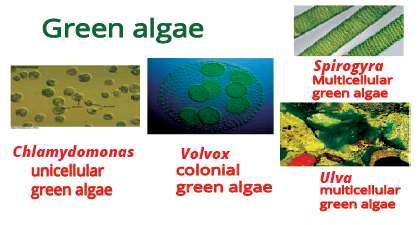
Nutrition
-
Autotrophs - Photosynthetic (most of them)
-
Parasitic forms (rare). E.g.: Cephaleuros.
Pigments
-
Chlorophyll- a, b, c, d.
-
Carotenoids- carotene and xanthophyll-fucoxanthin are dominating pigments in brown algae.
-
Phycobillins- phycocyanin and phycoerythrin.
Reproduction
-
Vegetative reproduction- Reproduction Using the Vegetative Parts.
Different Types are:
-
Fission
-
Fragmentation
-
Budding
-
Tubers
-
Gemmae.
-
Asexual Reproduction-Without the Fusion of Gametes.
Mainly by:
-
Zoospores within sporangia
-
Aplanospores
-
Akinete
-
Hypnospores
-
Endospore
-
Exospore
-
Monospore
-
Auxospore.
Palmella Stage- In this stage of asexual reproduction the spores become colonial and appear like the algae named Palmella. Eg: Ulothrix, Chlamydomonas.
-
Sexual Reproduction
Homogametes-similar gametes
Heterogametes-dissimilar gametes
1. Isogamy: the union of comparable gametes in terms of morphology and physiology. Flagellated (Chlamydomonas) and non-flagellated (Spirogyra) are examples of isogamy. 2. Anisogamy: the union of gametes with different morphologies or physiological profiles. In Chlamydomonas, morphologically distinct gametes fuse. In Spirogyra, the fusing of physiologically different gametes takes place. 3. Oogamy: This is the union of two different types of gametes—a large, nonmotile female gamete and a small, motile male gamete—that differ in both morphology and physiology. For instance, Fucus and Volvox.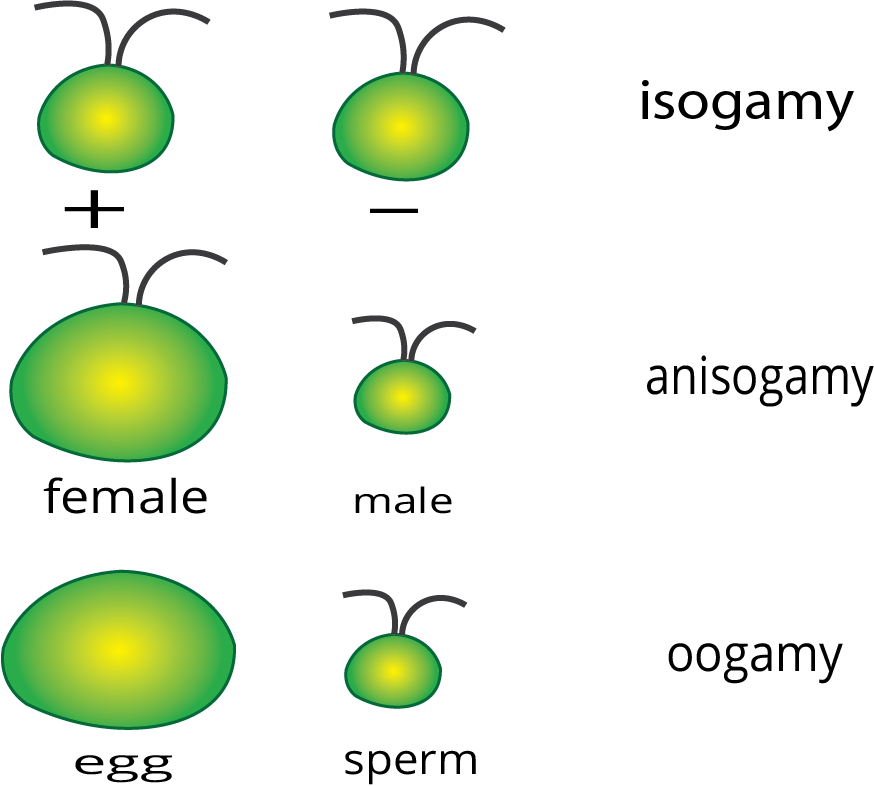
-
Exceptional Cases:
Unicellular antheridium and oogonium.E.g.: Oedogonium.
-
Special Reproductive Structures:
Conceptacles –Eg: Sargassum
Globule (antheridium) and nucule (oogonium) Eg: Chara
In spirogyra, a unique kind of sexual reproduction known as conjugation occurs. The life cycle is divided into two phases: diploid and haploid, with some exhibiting generational alternation. The haploid phase and the diploid phase alternate.-
Classified Into Four Classes:
1. Cycadopsida Eg: Cycas
2. Coniferopsida eg: Pinus
3. Gnetopsida: Eg: Gnetum.
4. Gingopsida- Ginko
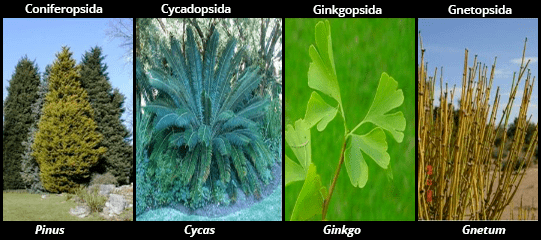
Economic Importance:
-
Timbers for furniture, Pulpwood, Pencil boxes, Musical instruments, etc.
-
Production of resins, Turpentine etc.-E.g.-Pinus
-
Edible seeds: Eg- Cycas, Pinus, Ginkgo.
-
Medicinal Eg: Ephedrine from Ephedra is used in treatment for respiratory problems
-
Taxol – from Taxus species are extracted to freeze cancer cells.
Common Names:
-
Maidenhair tree- Ginkgo
-
Sago's palm is called the Panda of the plant kingdom- Cycas
-
Largest gymnosperm- Sequoia
-
Smallest gymnosperm- Zamia
-
Gymnosperm with xylem vessels- Ephedra, Gnetum.
Gymnosperms
 possess naked seeds since the ovules are left exposed (no fruit covering) and are not encased in or by an ovarian wall. Plants yield seeds without flowers. The ovarian wall does not surround ovules either. prevailing vegetation in the Jurassic era. Shrubs and medium-sized or taller trees are classified as gymnosperm.
possess naked seeds since the ovules are left exposed (no fruit covering) and are not encased in or by an ovarian wall. Plants yield seeds without flowers. The ovarian wall does not surround ovules either. prevailing vegetation in the Jurassic era. Shrubs and medium-sized or taller trees are classified as gymnosperm.The taproot system is typically found. They are also connected to mycorrhiza, the relationship that fungi have with the roots of higher plants. For instance, Pinus. Like in Cycas, coralloid roots contain bacteria that fix nitrogen. Pinus or Cycas refer to branching or unbranched stems. Leaves with thick cuticles and recessed stomata are shaped like needles, suited to withstand extremes in temperature, humidity, and wind. For instance, Pinus. Leaves might be complicated or simple.
Reproductions
Cones or stromboli are created when sporophylls group together. Generally speaking, they are either male or female cones or monosporangiate. Female cones have a longer lifespan than male cones. Male strobili, also known as male cones, are microsporophylls that carry microsporangia, which contain microspores that grow into smaller gametophytes known as pollen grains. Nucellus, also known as the female cone or female strobili, are megasporophylls bearing megasporangium that contain encased megaspores.A female gametophyte containing two or more archeonies emerges from a single megaspore. Pollen grains go to the ovules via wind-borne strands. To discharge male gametes into the ovule, they construct a pollen tube that reaches the archegonia. After the gametes fuse, a zygote is created, which gives rise to embryos.
Ovules become uncoated seeds throughout development. Gymnosperm endosperms are haploid in origin and resemble a prefertilized result. The sporophyte is the predominant independent photosynthetic stage. The gametophyte is not a free-living organism; it can have one or a few cells.
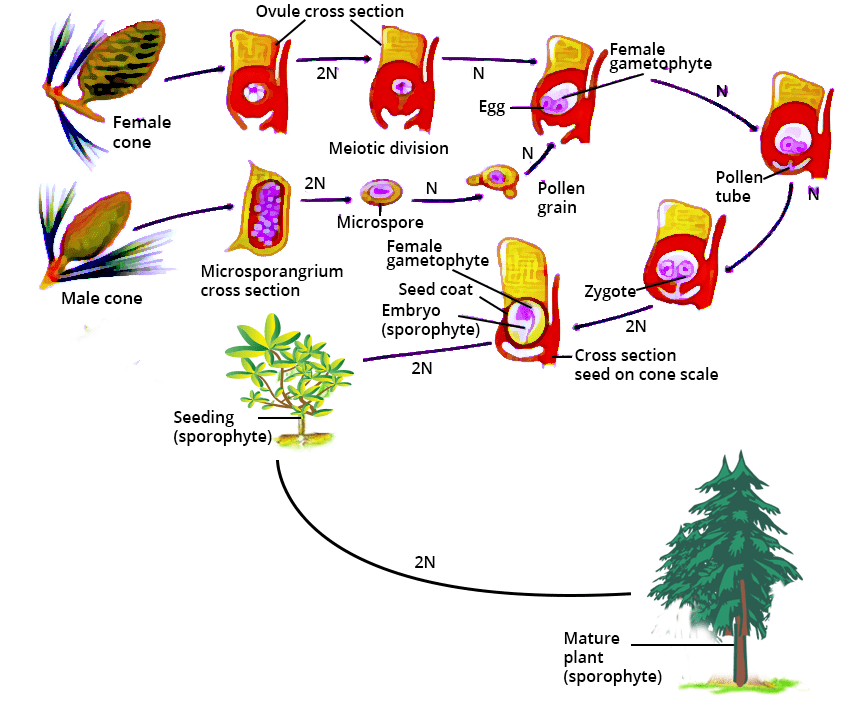
Alternation of Generation
A haploid gamete that produces both gametophytic and spore-producing sporophytic generation alternates. Three kinds Haplontic Life Cycle: In this kind of life cycle, haploid spores generate a free-living gametophyte that is the dominant photosynthetic phase. Using mitosis, the gametophyte generates gametes, which unite to create the zygote, symbolizing the sporophytic generation. To create haploid spores, the zygote goes through the meiotic process. In this case, the gametophytic phase predominates. such as Chlamydomonas.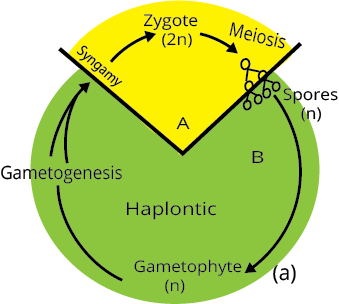 Diplontic Life Cycle: In this case, the photosynthetically independent and dominant diploid sporophyte stage of the plant is involved. One to a few celled haploid gametophytes that nourish is the representation of the gametophytic phase. For example, in the case of angiosperms and gymnosperms, the sporophytic phase is dominant.
Diplontic Life Cycle: In this case, the photosynthetically independent and dominant diploid sporophyte stage of the plant is involved. One to a few celled haploid gametophytes that nourish is the representation of the gametophytic phase. For example, in the case of angiosperms and gymnosperms, the sporophytic phase is dominant. 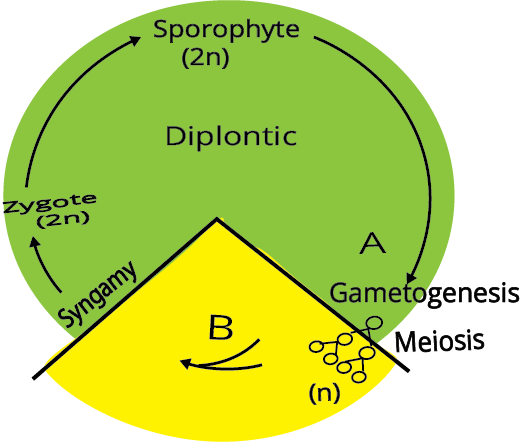 Haplo-Diplontic Life Cycle: This type of organism has multicellular, largely free-living haploid and diploid phases. As examples, consider bryophytes and pteridophytes.
Haplo-Diplontic Life Cycle: This type of organism has multicellular, largely free-living haploid and diploid phases. As examples, consider bryophytes and pteridophytes.  While most algae genera have demonstrated a haplontic life cycle, examples of these include Ectocarpus, Polysiphonia, Kelps, etc. However, a haplo-diplontic life cycle is also present in some. Brown algae called fucus have a diplontic life cycle.
While most algae genera have demonstrated a haplontic life cycle, examples of these include Ectocarpus, Polysiphonia, Kelps, etc. However, a haplo-diplontic life cycle is also present in some. Brown algae called fucus have a diplontic life cycle.CBSE Biology Notes for Class 11 Chapter 3 PDF
CBSE Class 11 Biology Notes Chapter 3 can be used to help with this subject's preparation for the CBSE Board exams. It is simpler for a student to receive better grades if they understand these subjects more. Students may find the extensive information a bit puzzling, even though the chapter is pretty straightforward. To ensure clarity, our official website offers a PDF download of the CBSE Class 11 Biology Notes for chapter 3.Benefits of CBSE Class 11 Biology Notes Chapter 3
These notes are a condensed and simplified version of the full chapter. Factually accurate explanations of the subjects are given here. These notes can help you prepare for this chapter by helping you study. Use these notes to revise these notes and save time.CBSE Class 11 Biology Notes Chapter 3 FAQs
What is biology class 11 chapter 3 about?
What is the toughest chapter in biology class 11?
Is 11th biology tough?

